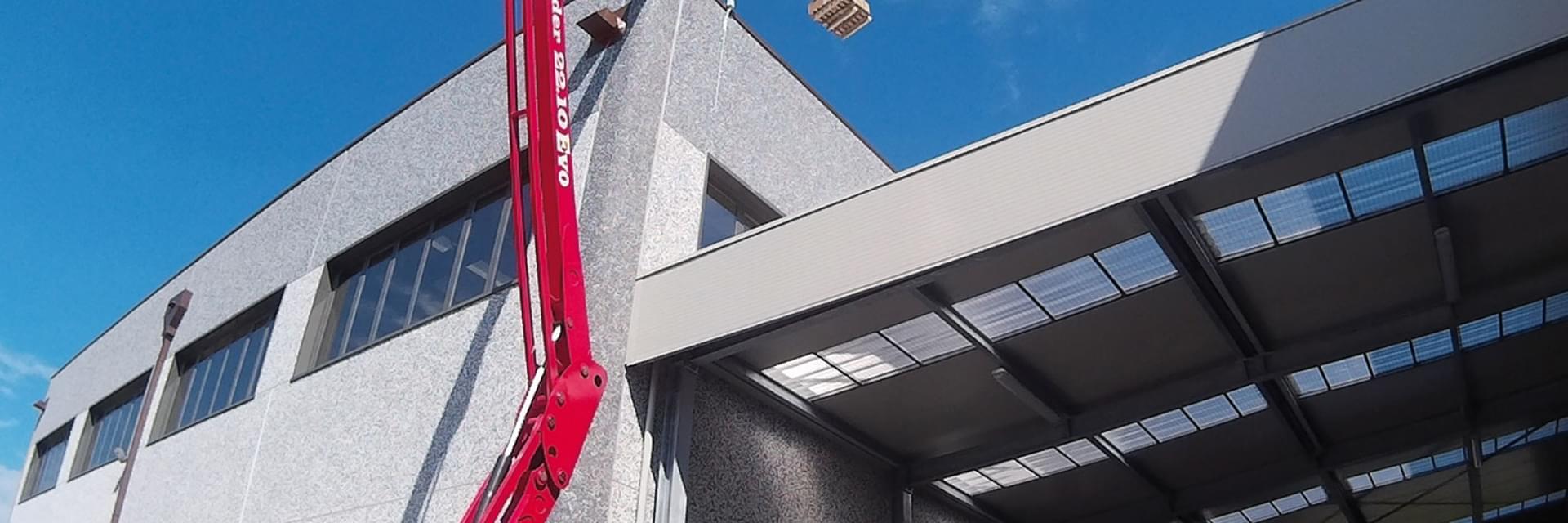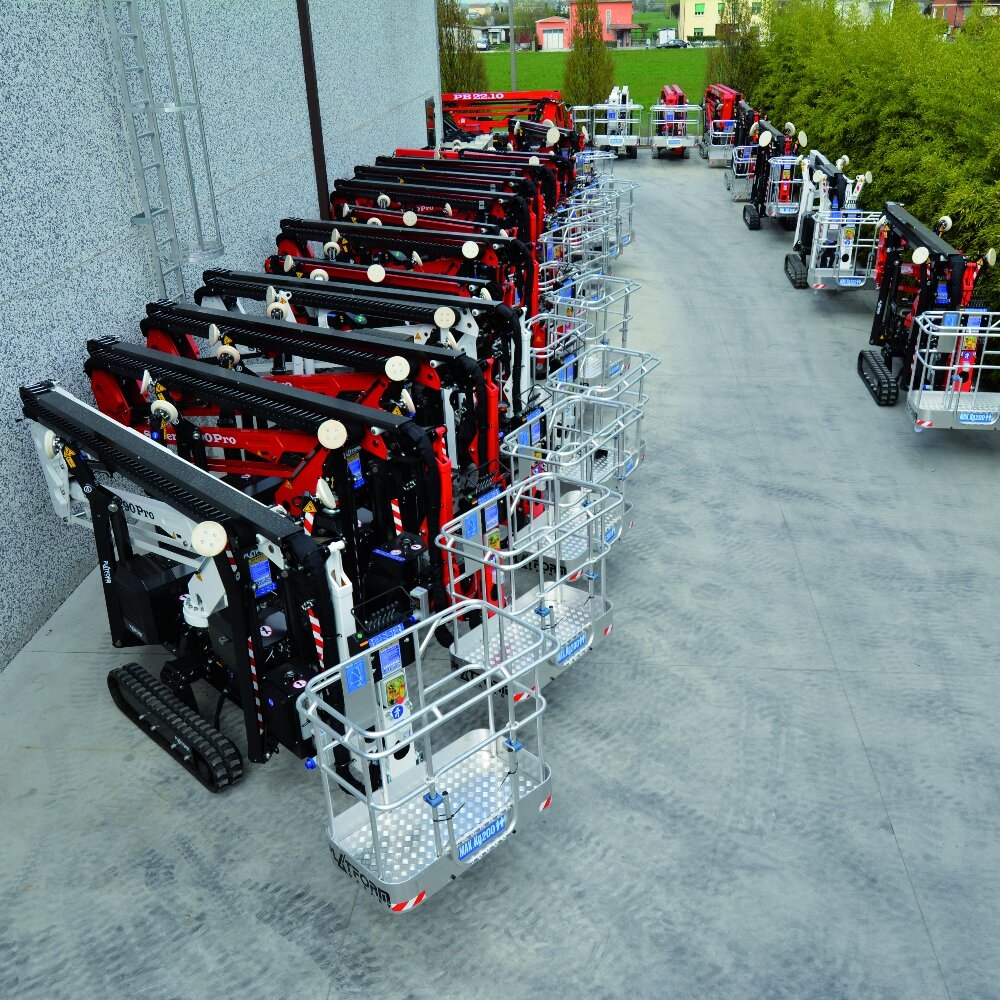
Exploring The History & Evolution Of Aerial Work Platforms
Working at heights is a phenomenon as old as construction itself. Even basic huts required a roof. They probably needed frequent re-thatching, too, which suggests a need for infrastructure maintenance. In fact, once humans learned to access elevated spots, they probably started trimming tree branches too, which means a rudimentary form of arboriculture started taking shape as well.
But back then, working at heights was risky. For centuries, scaffolding and ladders were the only way to access the vertically inaccessible. Fun fact: the use of a ladder can actually be traced back to 10,000 years ago. Cave pictures found in Spain were the earliest evidence of it. The Bible mentions the ladder, too.
Thankfully, times have changed since then, and the rickety ladder has now been replaced with something much more stable and robust. We are talking about aerial work platforms. Technological progress and industrial demands may have driven their development, but other factors have played a crucial role in their story.
In this blog, we will take you on a journey – touching upon the origin story of aerial work platforms and how they have come to transform elevated work. Let’s begin.
The Early Days Of Scaffolds & Ladders
Let’s rewind to the pre-industrial revolution era. Wooden scaffolds and ladders were the norm then, alongside rudimentary platforms that could be a fatal hazard if not used carefully. Made of simple planks and timber, they were generally custom-built onsite with minimal safety measures and mechanical assistance.
Safety was not a priority for these structures, which means the risk of collapse, falls, and instability was omnipresent. This acted as a roadblock to optimal productivity that was further impaired by the sheer amount of time it took to build and disassemble these elaborate structures.
Needless to say, accessing and working at high elevations was not easy. But the progress of industrialization brought improvements in scaffold designs. Metal frames became a standard, and the overall stability of the structure improved. But issues still remained. For example, safety was lacking, and so was flexibility. These scaffolds were inherently bulky, slow to set up, and to tear down. All of these factors indicated it was time to usher in a new revolution in height access, and that is exactly what aerial work platforms did.
The Advent Of Aerial Work Platforms
In the mid-20th century, something glorious happened. Jay Eitel made the first-ever cherry picker in 1953, which served as the earliest prototype for a mechanical lift. Yes, it was called cherry picker back then because it was indeed used to pick cherries, but it paved the way for the next evolution.
Over time, other manufacturers took upon themselves the task of designing and building mechanized solutions such as spider lifts and boom lifts that could solve access issues for elevated work. These platforms featured a hydraulic system that allowed workers of all kinds to reach elevated areas with more precision and stability than they could before.
Efficiency took a sharp turn for the better. But the early models still had some fundamental limitations that made them a sub-optimal choice. For example, navigating them in confined spaces was an issue. They did not have the type of tracks needed to work on uneven ground either. Plus, their bulky size meant they were not the best option for busy and compact urban environments.
The Evolution of Aerial Work Platforms
The early cherry-pickers might have been a breakthrough, but the real game-changing moment arrived with the introduction of spider lifts and rail boom lifts. Compact and versatile, they made working at heights the safest experience possible. Let’s explore their impact.
Spider Lift: A Compact Powerhouse
Do you know why spider lifts earned that name? Because of their ultra-flexible articulated legs that are exceptionally stable on all kinds of surfaces, including uneven ones. If that was not enough, they are lightweight too and feature narrow frames, which means they can fit through most standard doorways. This makes them perfect for urban projects where space is an issue. In fact, spider lifts are a contractor’s favorite when it comes to rooftop work and heritage site restorations.
Equipped with hydraulic arms that offer articulation capabilities, spider lifts can be used to access multiple directions of an elevated area while being firmly positioned in a single spot. Furthermore, if sustainability is just as important for your project as flexibility, many modern spider lift models come with electric or hybrid engines that produce lower emissions and noise. That is to say, you can easily use these spider lifts in environmentally sensitive areas.
Rail Boom Lifts: Peak Precision & Performance
Railway work was more challenging than construction or tree care. With open electrical lines, even a single mistake could be fatal. Specialized equipment was truly the need of the hour, and rail boom lifts stepped up to deliver. Designed specifically for rail environments, these lifts provided the precision and portability that narrow railway corridors needed. Newer models can operate directly on tracks, too, offering a seamless transition between rail and adjoining road work.
Featuring a modular design with a rail-compatible undercarriage, these lifts can be deployed quickly and used for a wide variety of tasks, including trackside electrical upgrades, signal installation, bridge painting, de-icing, and catenary maintenance. Compact enough to work in the narrowest of rail corridors, they do not lose their balance, ensuring rail operators, contractors, and utility workers get the safest and most efficient way to access critical spots in rail environments.
Aerial Work Platforms: Technological Innovations In Recent Times
Be it spider lifts or rail boom lifts, aerial work platforms now stand at the cutting edge of technology, offering advanced features that make them truly indispensable on all worksites. Notable safety and efficiency-improving innovations that have taken place lately include:
- Load-sensing systems: These prevent the machine from overloading, thus maintaining its inherent stability in all kinds of working conditions.
- Remote controls and automation: These allow operators to maneuver their platforms from a safe distance, which is particularly useful in very narrow spaces or hazardous areas.
- Electric or hybrid engines: These make aerial work platforms suitable for use in protected and noise-sensitive areas, significantly reducing operational costs and environmental impact.
- Self-leveling platforms: The main advantage of self-leveling lifts is that they remain horizontal on uneven terrain, minimizing the risk of tip-overs and operator errors.
- Integrated diagnostics and safety alerts: Advanced diagnostics check your machine’s health in real-time, detecting potential failures before they happen so they can be prevented.
Modern aerial work platforms are sophisticated machines that show no signs of stopping. Many of them, including our very own at Platform Basket Canada, offer several customization options too so operators can equip their machines with the accessories they need.
Applications That Benefit From Advanced Aerial Work Platforms
Aerial work platforms have made a difference in several industries, simplifying height-based tasks so they can be done in the quickest and most efficient way possible. Here are industries that just cannot do without this mean machine:
- Construction: From navigating narrow doorways to crowded streets and tight rooftops, these lifts can work in any environment.
- Telecom: Installing antennas, fiber optics, and other telecom-related infrastructure in higher areas is as easy as 1-2-3 with these platforms.
- Arboriculture: Aerial work platforms are highly instrumental in conducting tasks such as tree trimming, pruning, and removal in all kinds of settings including parks, residential areas, and roadsides.
- Utility Work: Maintaining powerlines and rail infrastructure in difficult terrains can be a challenge, which these lifts swiftly solve with their excellent stability and reach.
- Heritage Building Restoration: Featuring delicate flooring and sensitive materials, historic sites require lightweight machines for repairs and restoration, which aerial work platforms are.
There are many other industries that rely on these machines too, including material handling, renewable energy installation and maintenance, equipment rental businesses, and much more.
Conclusion
From simple ladders to advanced aerial work platforms, the leap in elevated work equipment technology has been massive, to say the least. Today’s high-tech spider lifts and rail boom lifts are a testament to the advancements made in work-at-height solutions. Serving as the epitome of safety, efficiency, and versatility, these lifts are now the number one choice for elevated work in several industries, including construction, tree care, railway maintenance, and more.
If you are looking for spider lifts and aerial lifts in Mississauga, Ontario, that professionals count on, Platform Basket Canada has several models for you. Standing at the forefront of evolution, our next-generation lifts are designed to tackle the most complex jobsites. Contact us to witness the power and stability of our most well-loved machines.



